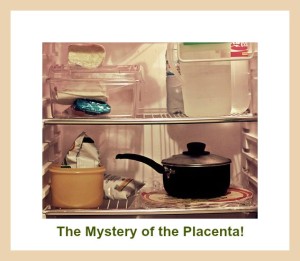This is part 1 of a 4 part blog series discussing Placenta Encapsulation and your safety. The inside scoop.
You decide; mountain or mole hill?
First Coast Doulas provides professional birth and postpartum Doula services, family yoga through Grow Yoga, and childbirth education to families living and birthing all over Jacksonville Florida and surrounding areas. We feel confident saying that we lead the way on the First Coast in the safest practice for placenta encapsulation. Our clients agree with that statement and our high standards.
Those who have chosen First Coast Doulas know that we are hands down the best choice for them. Your First Coast Doulas Placenta Encapsulation Specialist is educated on placenta encapsulation, double trained, holds a current food handler’s card, holds a current certificate of completion in bloodborne pathogens and infection control for placenta encapsulation specialists in accordance with the OSHA bloodborne pathogens standard 29 CFR 1910.1030, and equally as important provides this service, like all of our others services in the safety of our client’s home only.
But, it wasn’t always this way. WHAT?!?! Oh no, I came to this place of enlightenment after I began encapsulating for clients, the wheels were set into motion, and then I set out to find a better way.
First Coast Doulas has since found a way to ensure our clients are receiving the very safest and most beneficial service available, our Placenta Encapsulation Specialists and their families are just as safe and comfortable with the process, and our process and specialist is highly respected by medical providers throughout the area for their standards and stance on this matter.
We’ll start at the beginning with a little back story.
Before training as a Certified Independent Placenta Encapsulation Specialist (C.I.E.S.) I read a couple books and did some research into this practice. I was intrigued.
I decided to seek some hands on training. I was taught by an intelligent woman who is also a placenta encapsulation specialist. There was a training held at her home, we went over the history of placentophagy, some of the common hospital scenarios, and proper handling and sanitization.
Then I researched equipment and I invested in all of the supplies I needed to get started in the business. Some supplies were one time use only, others were multi-use items that were of good quality and safe to use according to the food handlers certification and OSHA certification.
I practiced with a few placentas that were donated to me to practice with.
Then, I encapsulated three separate placentas for certification, wrote essays for each, and submitted a test. Then came certification.
I read more studies on placenta encapsulation and this is how it began for me. This was enough for me to get started along my journey as a C.I.E.S.
I was practicing proper sanitization procedures according to OSHA and proper handling set forth by the Florida Food Handlers guidelines.
Along the way, I implemented online forms, procedures to make this process as efficient as possible, and a professional guide to make it easy for clients to line up encapsulation via the internet.
Since training I have heard and continue to hear stories from other Encapsulation Specialists. Stories of two placentas in their fridge waiting to be encapsulated.
I’ve see pictures of women using bamboo cutting boards, these harbor bacteria and are very dangerous and are actually advised against! How could one view this as acceptable?
I’ve seen a picture of a placenta in a Doulas work fridge, the community shared fridge, sitting there next to her co workers lunches, waiting to be taken to her home. NO, just no.
I’ve viewed pictures of two coolers in someone’s car at one time with the caption that read, “It’s just one of those days!” Pictures of women handling another woman’s placenta with bare, un-gloved hands. Yes, no gloves used!
I could stop there, I mean gross! Unprofessional! What a blatant display of disrespect of the human placenta and breaking all guidelines set forth for the safety of women consuming their placentas.
I read questions in groups on facebook that asked, “What temperature should I be dehydrating on? Does this placenta look dry enough to put into capsules? Why do these have mold on them? How long do you “cook” it for? My dog ate a piece of placenta, will he be o.k.? How many of you allow your kids to help you encapsulate for your clients, do your clients know about this?”
WHAT! Wait, hold up right there!
To be continued…
